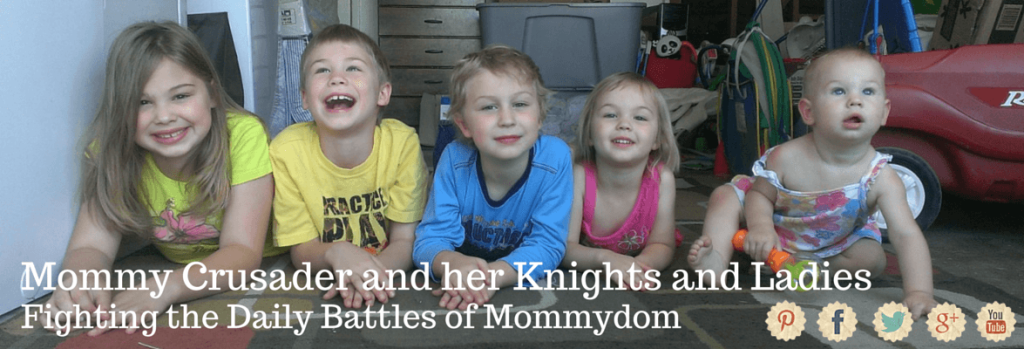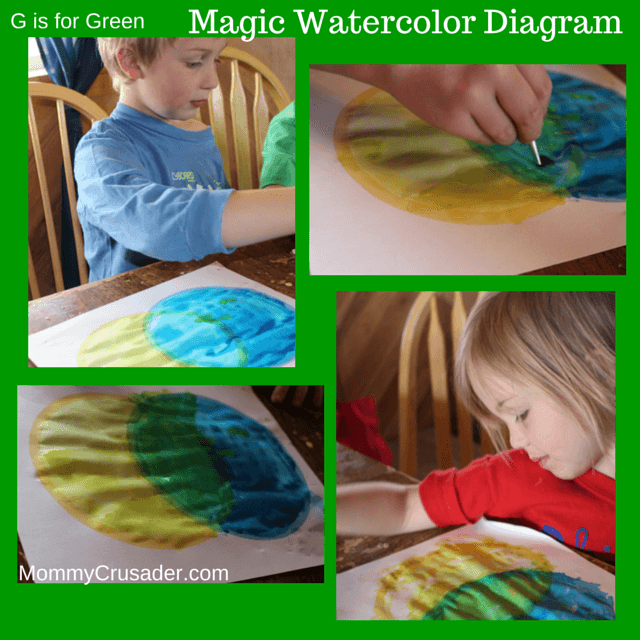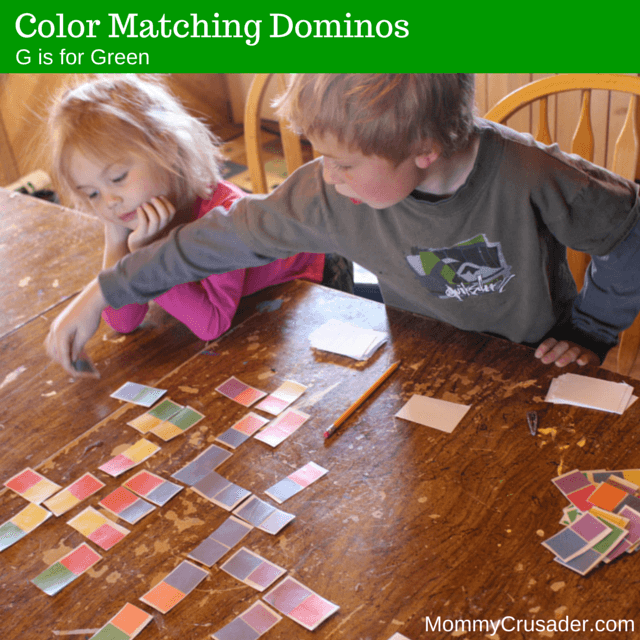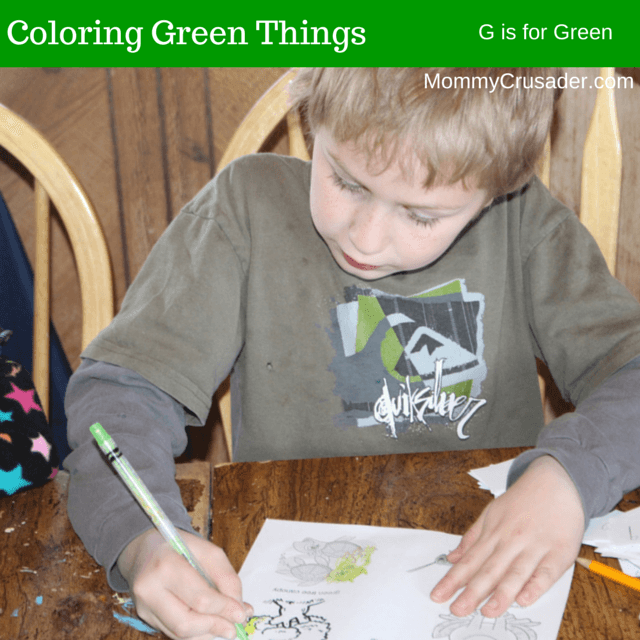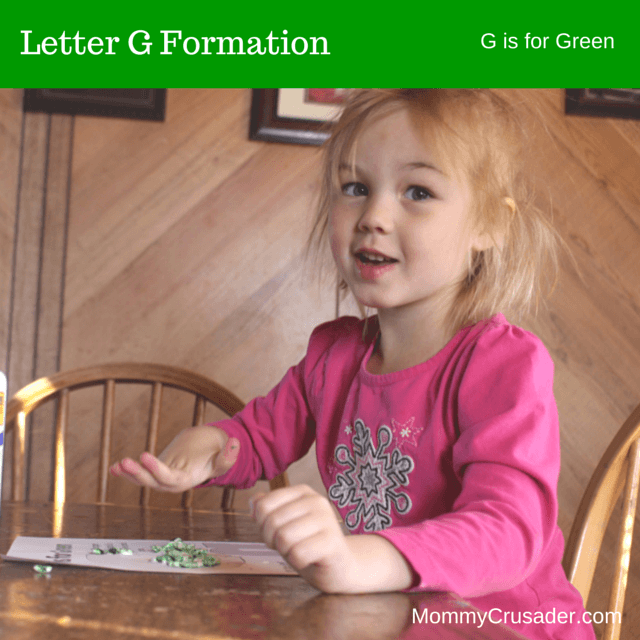It’s so much fun to watch young children as they explore what colors do. We’ve done a lot of primary/secondary color explorations. But this week our preschool letter is G, so I thought we could focus on just green – plus it’s starting to be spring time here and green always feels like spring to me. This week, then, our unit of study has been G is for green.
Activity One: Magic Watercolor Diagram
Objective: To help children understand that green forms from blue and yellow.
Materials:
One blue and yellow Venn diagram worksheet for each child, click here for the printable
Blue and yellow watercolors for each child
Paintbrushes
Method:
Explain that all colors are made from a combination of the three primary colors – red, yellow, and blue. Highlight that the focus for this activity is on making the color green.
Explain that green is formed by mixing yellow and blue.
Now, have the children use their watercolors to paint the blue part of the Venn diagram. Have the children set the paper aside so that the circle can dry. This is important because we don’t want the colors to bleed into each other, we just want the colors to mix on top of each other. While waiting for the first circle to dry play “Color Matching Dominos” (instructions follow).
After the game, and the blue circle is dry, have the children use their watercolors to paint the yellow circle. Be sure to encourage them to use a lot of pigment and not much water for this circle.
Both of my children were amazed at what happened where the two circles overlapped. They thought the changing color was a fantastic trick and wanted to make it happen again.
Activity Two: Color Matching Dominos
Objective: To help reinforce color names and color matching ability.
Materials:
One set of Color Matching Domino tiles, available here, printed and cut out.
Method:
Place all the tiles face down on a table
Pick one to be the starting tile
Hand out seven tiles to each child
Explain the rules
Rules: Each person will take a turn placing a tile onto the table. The new tile needs to be touching at least one other tile. Where ever the tiles touch, the colors need to match. If someone cannot place a tile, they can draw a tile instead. The first person to place all their tiles wins.
Play the game.
This was a fun way to help my children refresh their color naming and matching skills. I had one little player who struggled matching some of the colors – so this really helped her gain a better understanding of the colors. The children all enjoyed the game so much that we had to play it again while our lunch cooked – and it inspired my Kindergartner to create his own version of a game. (We’ll share that soon.)
Activity Three: Coloring Green Things
Objective: To show the children how many things are green in the world
Materials:
One coloring sheet for each child, available here
Green crayons, markers, or other coloring instrument
Method:
Hand out the green paper.
Explain that there are green things all around us.
Tell the children to color the green things they find on the worksheet
This activity is a simple coloring page, but it helps the children understand that there are many green things around them. It also is a good way to get in some fine motor practice. This activity only took about 10 minutes for my group of children to complete.
Activity Four: Letter G Formation
Objective: Introduce the children to the shape of the letter G
Materials:
Letter G worksheet, available here
Container of green cereal
Glue
Method:
Have the children place glue inside the upper and lower case letter G on the worksheet.
Then have them place the cereal on top of the glue.
Let them continue gluing the cereal in place until both letter outlines are filled in.
This was a fun way to introduce the shape of the letter G. I used puffed rice (died with green food coloring) as the cereal. Using the puffed rice cut down on the snacking, but other cereals can be used instead. My kids enjoyed the texture of the cereal and they enjoyed gluing things. One note – younger children may have trouble understanding where to place the glue, so they may need help with that part of this activity.
Look for part two coming soon. It will include gross motor activities, a creative play/literacy activities, hand writing practice, and math.
